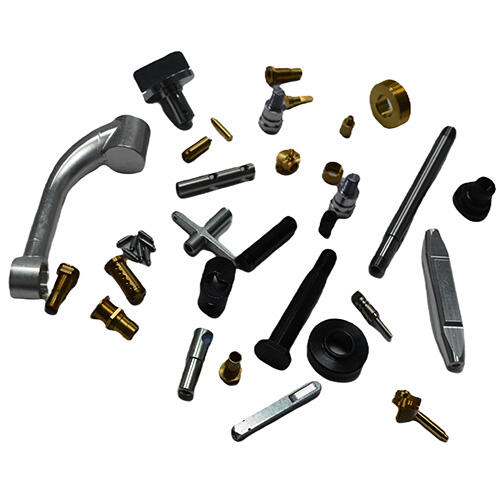CNC turning and milling sit at the heart of modern manufacturing. Knowing how they differ can help businesses boost output, save costs, and raise product quality.
CNC Turning at a Glance
CNC turning is a subtractive process in which a workpiece spins in a chuck while a stationary cutting tool moves along its length. As the material rotates, the tool shaves it away, forming cylindrical or conical surfaces. This method suits any part that relies on round symmetry, including shafts, pins, collars, and bushings. Because of its speed and accuracy, turning is a go-to operation for automotive, aerospace, and medical-device shops.
What CNC Milling Does
With milling, the cutting tool itself turns while the workpiece slides across its edge, and machines work along several axes at once. That freedom of motion lets engineers create flat faces, angled slots, pocketed cavities, and other complex features. As a result, milling serves a broad list of projects, from simple brackets to molds for mass-casting or injection-molding runs. When parts need geometry that turning alone cant provide, milling steps in to finish the job.
CNC Turning vs. CNC Milling: The Basics Explained
-
What Moves? In CNC turning, the workpiece spins around like a pizza on a rotating plate. In milling, the workpiece stays put while a fast-moving cutting tool slices into it. That simple switch changes the sort of shapes each method can create.
-
How Much Metal Is Lost? Turning eats away big chunks of material quickly when you start with a rod or tube. Milling shines when the job calls for grooves, pockets, or any odd outline on a flat face.
-
Cutting Gear: On a lathe, machinists usually drop in a single-point insert that scrapes, shaves, and then moves on. Mills, by contrast, spin end mills or face mills with many teeth biting at once. That tooling choice feeds directly into cycle times and production costs.
-
Where Each Method Fits Because they do different tricks, turning and milling find homes in different factories. Lathes rule when the part must be round, while mills take over for plates, brackets, and elaborate 3D contours.
-
Getting Ready to Work Setting up a lathe for a simple shaft often takes minutes, not hours. Mills, on the other hand, may demand extra time to swap tools, level the fixture, and load the part. So the total setup time really depends on the parts design.
Choosing the Right Process for Your Needs
When a shop has to pick between CNC turning and milling, it should weigh part shape, material, run size, and budget. Roughly speaking, turning usually costs less when thousands of round pieces roll off the machine. Milling, on the other hand, shines on small orders of tricky, non-cylindrical parts.
Industry Trends and Future Outlook
CNC turning and milling still grow with every leap in tech. Today, robots and smart sensors are boosting speed and cutting waste. At the same time, 3D printing pushes some shops to mix subtractive and additive tricks. Staying tuned to these shifts helps companies keep their edge on the plant floor.




